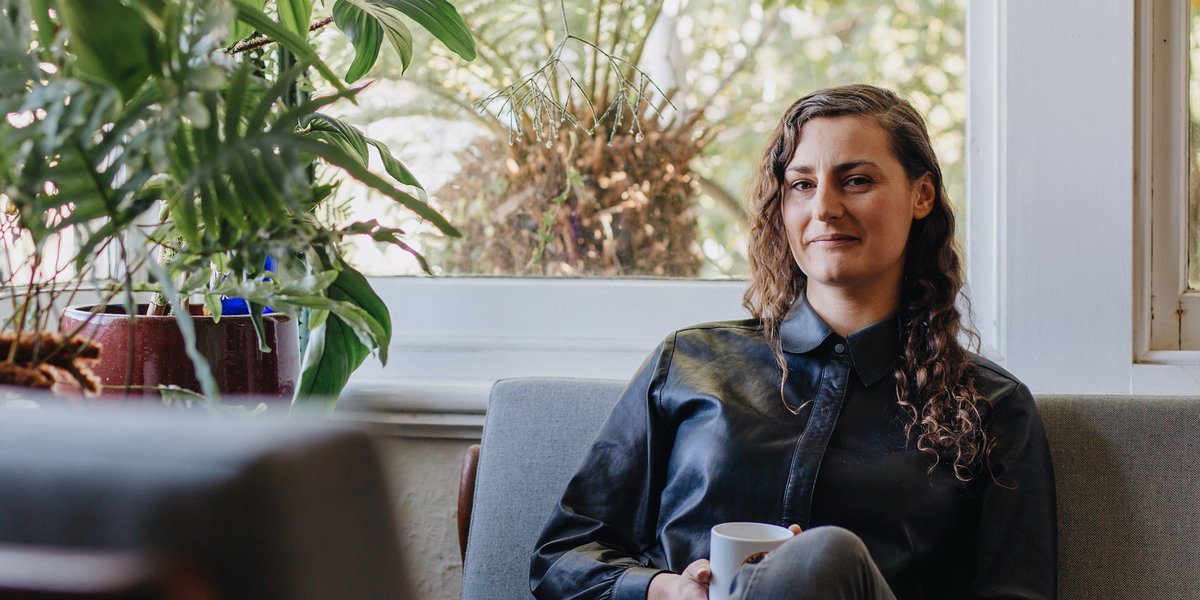Caleb Nichols-Mansell
"I started to realise a hunger for my own practice. I'd always felt this disconnect around culture, and then when I tapped into this creative space, I felt like I found a connection."
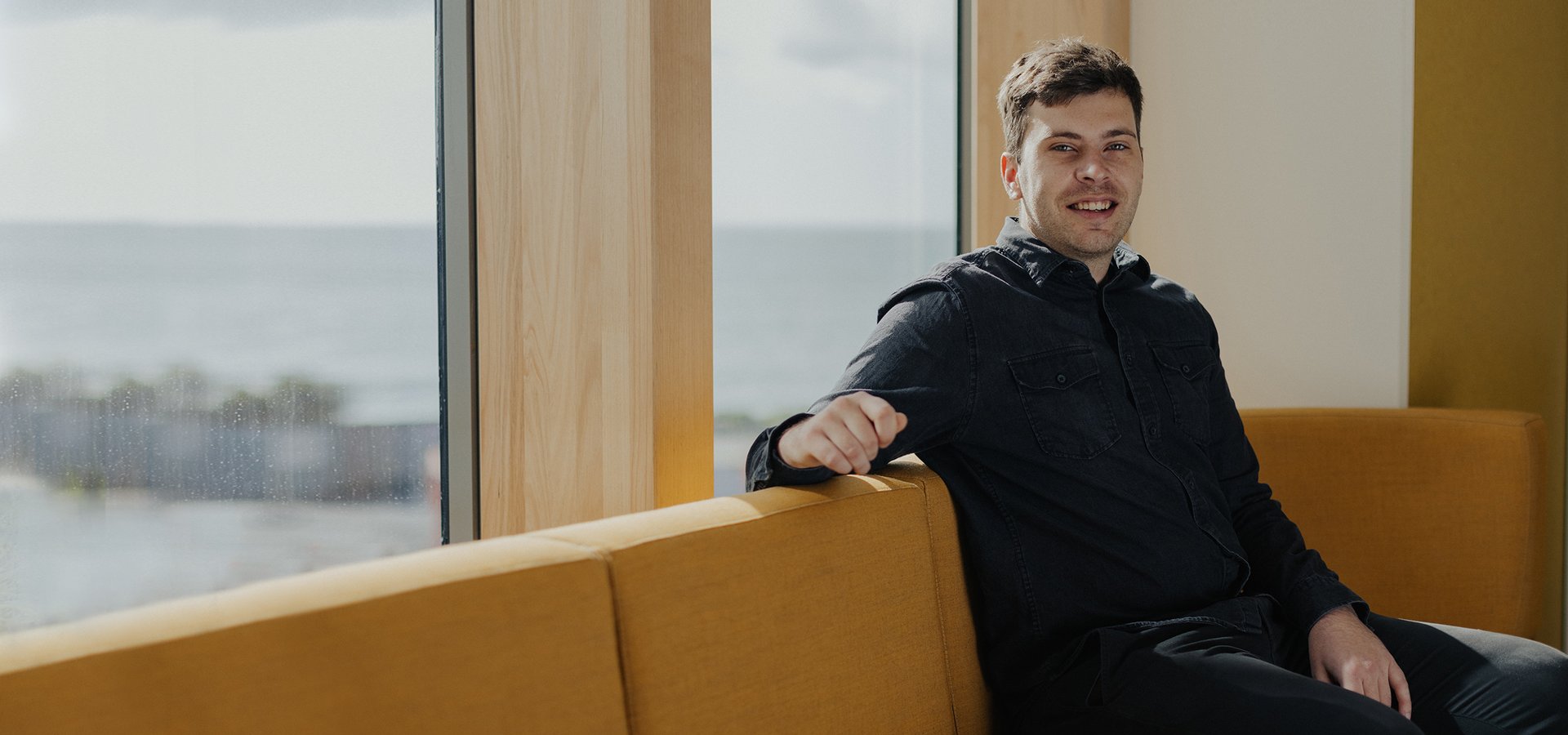
"I pay homage to my culture and our history through my artwork, and the stories that I embed within my artwork. That's how I honour our people and our stories, and keep that narrative going."
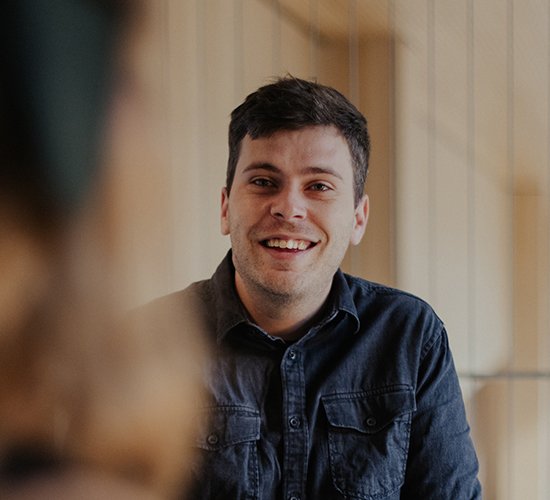
“I think creativity has always lived within me.
Growing up, the arts seemed very defined — you're a painter, or a sculptor. I absolutely admire painting, but I've got no idea how to paint. If you give me a paintbrush, I can't do anything with it. But give me an iPad and an Apple pen, and I'm off and away. Looking back, I guess I've always had this creativity… it just expressed itself in different ways.
Blackspace Creative really started when I left the University of Tasmania (UTAS). I was working at UTAS in a student support role, assisting Aboriginal students. But I was really craving creativity, and I suppose a way to express myself.
I’d been involved with graphic design elements at UTAS Riawunna Centre, and then I was at the Rural Clinical School, working in Aboriginal health careers. I had the opportunity to come down to Hobart and work with Ruth Langford at Nayri Niara, and they'd received funding to run an exhibition called lakapawa — which is a palawa kani word, it means 'to be seen'. The exhibition involved six Aboriginal elders, who chose six emerging community artists, and they come together to show at the Long House and the Darwin Aboriginal Art Fair. Throughout that process, I grew these relationships with our community artists, and really become aware of their practice and what they were doing. It was so fantastic to have this opportunity, but everyone was sad that it was just a two-week timeframe. At the end of that, it was time to pack up and go home.
We started talking about having somewhere to exhibit our works, potentially even sell our works, all year long. That’s where this idea of Blackspace was formed; a community-owned and -operated online hub selling authentic, sustainably sourced Aboriginal art from creatives living and working in Tasmania.
I was able to work with the elders and the emerging artists, they were our launch group of artists. I spent so long supporting the development of our emerging community, I started to realise a hunger for my own practice. I'd always felt this disconnect around culture, and then when I tapped into this creative space, I felt like I found a connection."
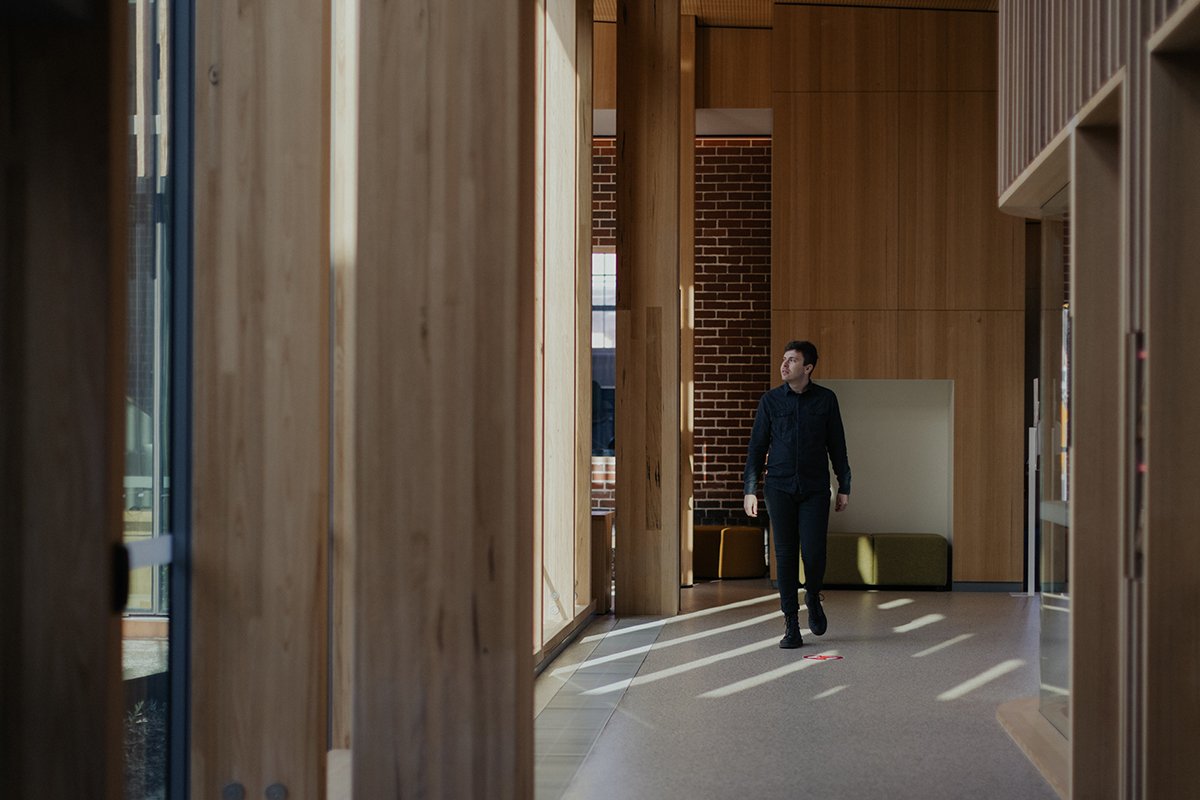
"I didn’t grow up with community. It wasn't really until I was about 15-16 that I was told that I was Tasmanian Aboriginal and understood what it meant. At the same time, I was trying to come to terms with the sneaking suspicion in my head that I might be gay. It was this real identity crisis. Out of nowhere, Dad was just kind of like, ‘Oh, mate, look, you’re Aboriginal. Your mum is Tasmanian Aboriginal.’ I started exploring, what does that actually mean?
I spent weeks and months going through Births, Deaths and Marriages, going through George Augustus Robinson's journals, going through Norman Tindale's journals. Every bloody person who wrote a diary during the invasion of Tasmania. I read the Van Diemen papers, which is a collection of papers and books about the Van Diemen Land Company up on the north-west coast, and how they traded that land and forced the Aboriginal community out. I researched it from front to back and then again. I could trace my lineage solidly.
It was weird transitioning to community. There were people within the community that I went to school with, and they're like… ‘I went to primary school with you. You didn't come to the blak groups’. In primary school, Aboriginal kids were taken out of class, to do cultural activities. I remember at some point in my childhood literally thinking, why aren't I going with them? That's my mob.
So, there was this level of disconnect. Everything just got tipped upside down very quickly.
Most of most of our cultural artists, they're practicing cultural practices that have been passed down through family lines and stuff. Because of my experiences, I wasn't privileged with having learnt those cultural practices. I pay homage to my culture and our history through my artwork, and the stories that I embed within my artwork. That's how I honour our people and our stories, and keep that narrative going. Just as our shell stringers do through their necklaces or our basket weavers through their baskets."
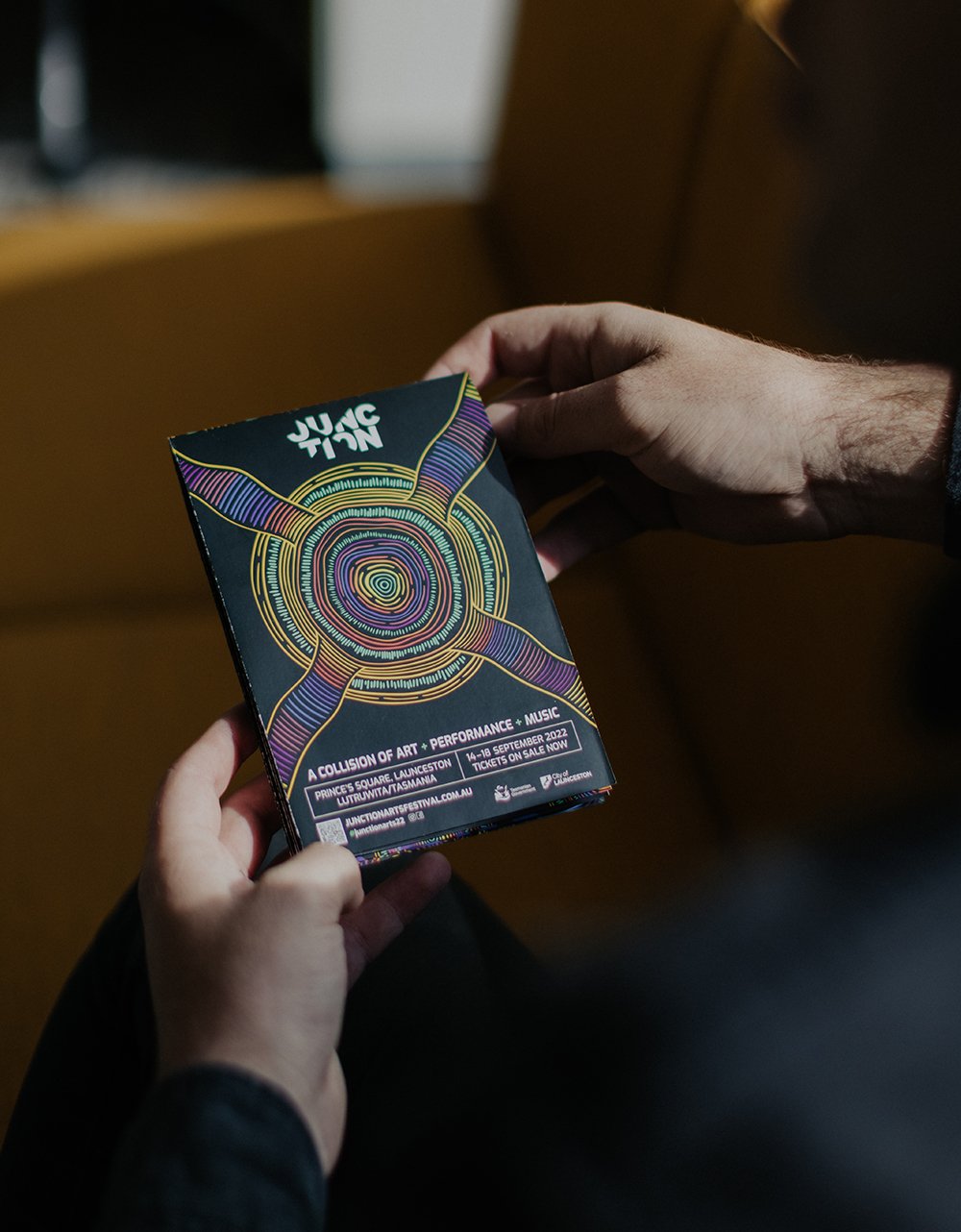
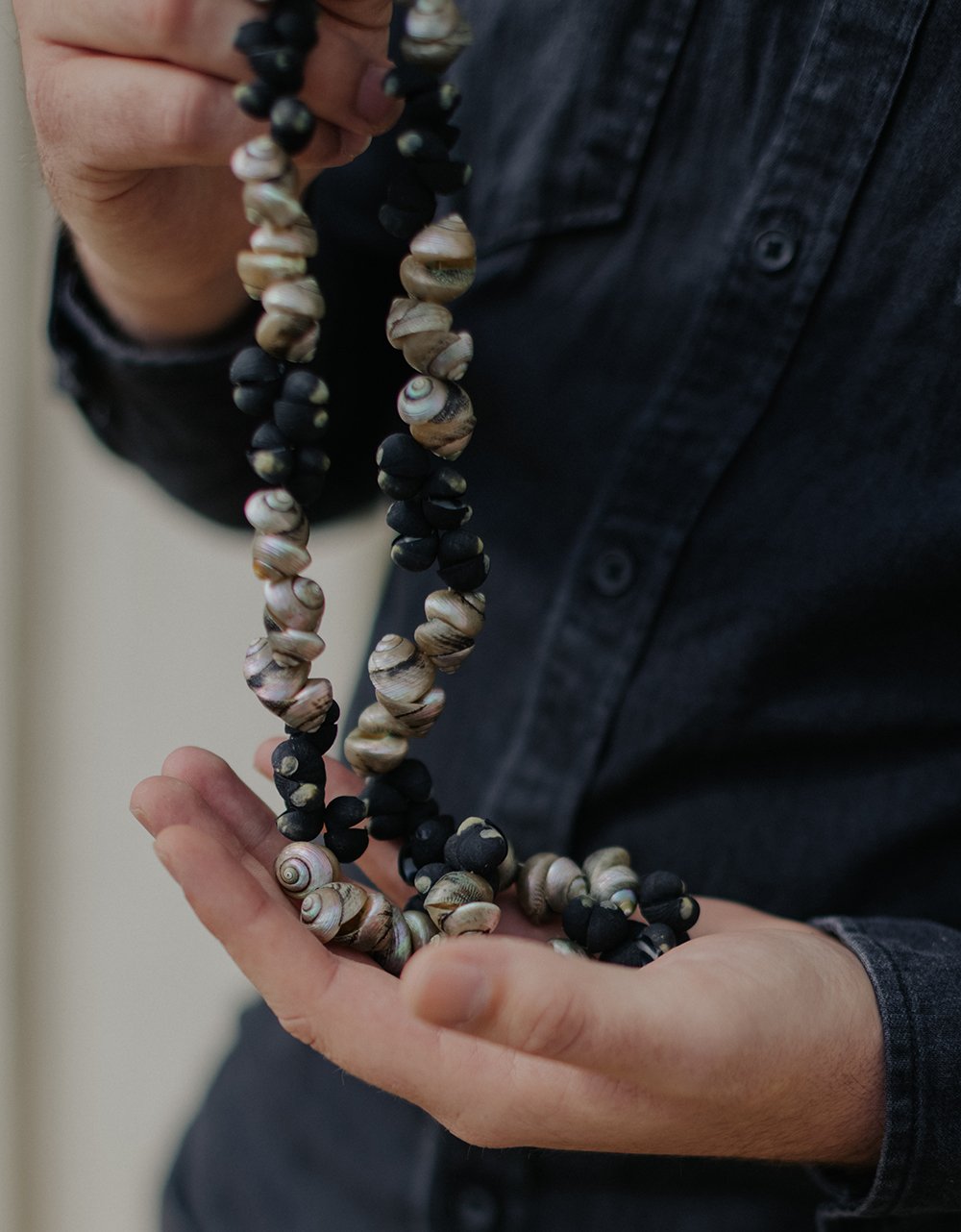
"I was absolutely blown away when I got a message from Jess Robinson, the Marketing and Partnerships Manager at Junction Arts Festival. She explained that each year, Junction engages a local artist to create their lead branding. I was so excited by the opportunity, and the fact I'd been approached, I've been a massive fan of Junction for such a long time.
I was living in Launceston when the very first Junction came to life. I remember being this young 16-year-old, who has just found my freedom and just found my independence. I’ve kind of followed Junction and their development and growth over the years. So it all just came really naturally.
There's been conversations within our community for such a long time around Prince's Square, which Junction uses as a hub. There's this interesting relationship between the festival, with the creativity and the storytelling, and the people who call that park theirs. My artwork for Junction is about acknowledging that, and paying homage to the fact that — from a city planner point of view — that land is just a green space to break up all the concrete and buildings. While it’s just a green space to some people, that's actually Country. It’s a part of Country that our community get to connect with. It’s a gathering spot for my mob. I wanted to pay homage to that, and to recognize that we've got a long connection there, but also that it's a shared place, and it's a shared coming together.
So, the artwork represents the four pathways coming into the park. The circles in the middle represent the mixing and gathering of the communities that come into that park. And I think that that's what makes Prince's Square special; not the fountain, not the statue, not the bright flashing lights that Junction puts up throughout the festival. It's that the energy and the connection and the knowledge that's stored within place.
I think that's my overarching aim within all my work: to tap into the stories and knowledge that are stored and held within Country. Country, just like the human body, stores memory, and knowledge, and trauma. We can heal Country and heal ourselves by tapping into and dealing with that. Dealing with that history and dealing with those truths, and exploring what that looks like in a modern day sense."
Caleb is featured in partnership with our friends at Junction Arts Festival.

We worked with north west Tasmanian photographers Moon Cheese Studio for this Tasmanian story.
Read about more Tasmanians
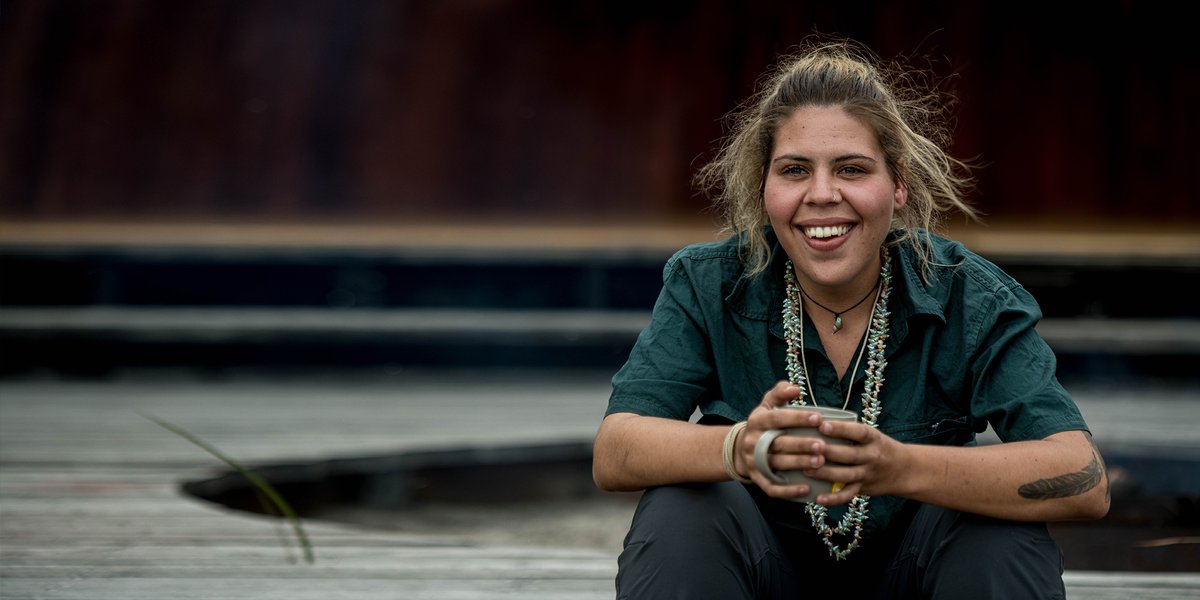
Carleeta Thomas
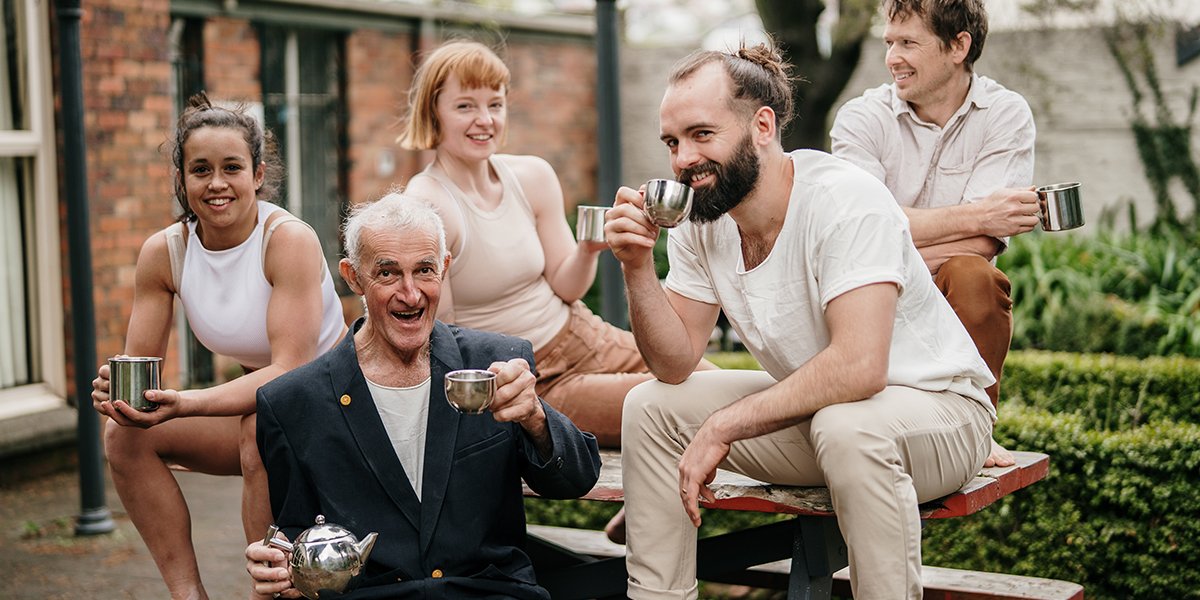
Freyja & Conor Wild
